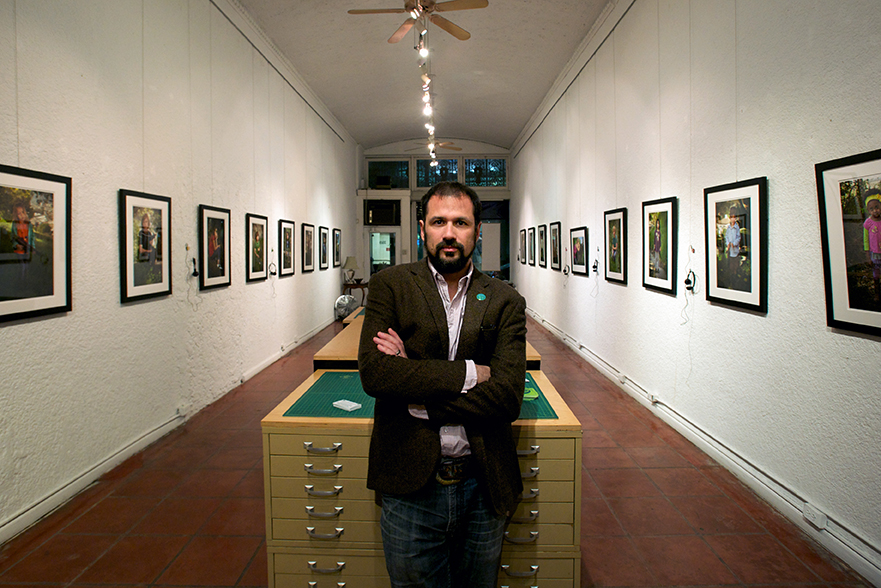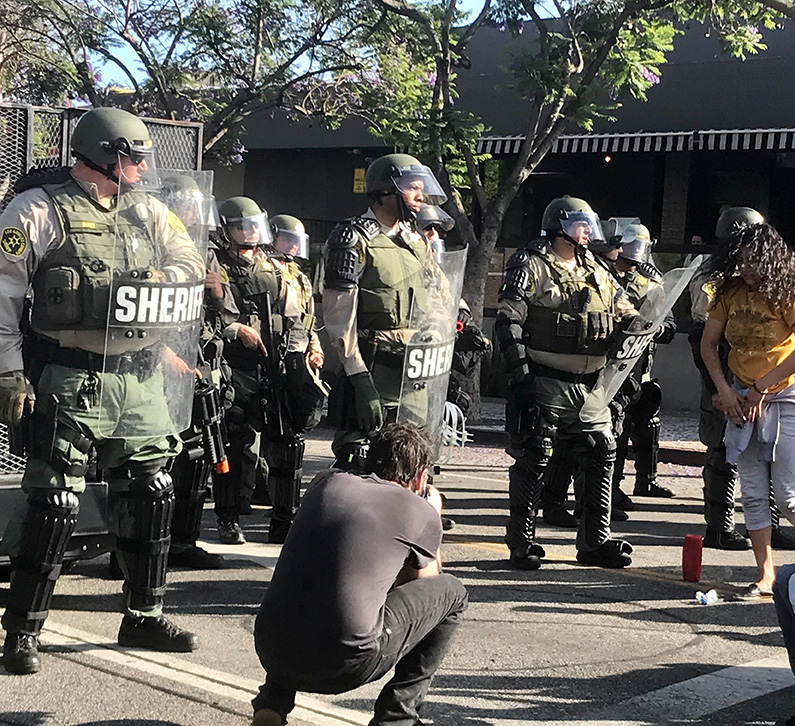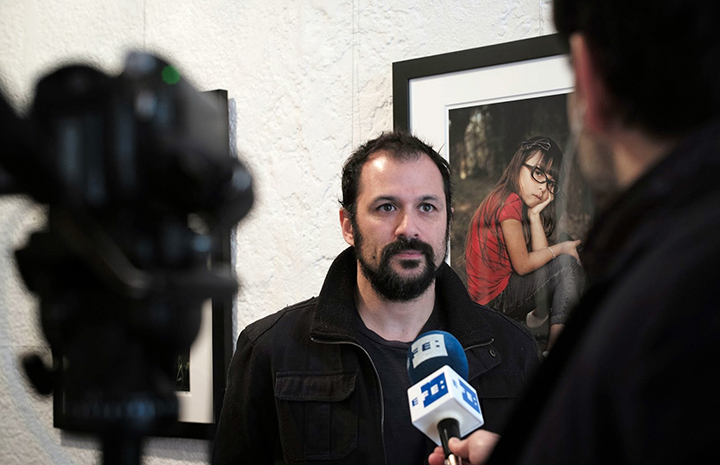 Photography as a career can come in many shapes and forms: travel, journalism, fine art, sports or portrait. For some photographers, like Greg Cohen, their careers have allowed them the opportunity to create all the above. Cohen’s collections are as varied as his experiences, yet the one thing they all have in common is that Cohen found an emotional connection – the subjects giving the work emotional impact that can only be captured by a true artist.
Photography as a career can come in many shapes and forms: travel, journalism, fine art, sports or portrait. For some photographers, like Greg Cohen, their careers have allowed them the opportunity to create all the above. Cohen’s collections are as varied as his experiences, yet the one thing they all have in common is that Cohen found an emotional connection – the subjects giving the work emotional impact that can only be captured by a true artist.
Fine art photography is defined as the intentional use of photography as your artistic medium of choice, used to further your conceptual idea. This can be achieved by using techniques such as lighting and composition to create mood, but nothing replaces the ability to capture the moment and emotion with the lens. According to Cohen, fine art photography is where his work really came to life. “Recognizing the emotional connection while shooting was something that began to happen and transform my work from assignment to something more,” he says.
Curators and fine art lovers can feel when a work has the imprint of the artist. This is as true in fine art photography as in a painting. As the artist connects, they will imprint onto the image an emotion that is intangible, transforming a photograph from the everyday to art. Cohen recalls when he felt his path to photography was complete. “While I’m shooting, I’m very much in the moment, it’s sort of meditative,” he says. “Photography gives me access to a state-of-being that is transformative.”
When deciding to become a fine art photographer where do you start? Cohen studied at University of Denver and graduated with a degree in English and Art. He began his career as a cinematographer and worked in that field for over 20 years, during which he continued to carve out time to shoot still images. He made a conscious decision to become a photographer, but it did not happen overnight. His philosophy about starting down this path was that no one is going to believe you are an artist until you believe it yourself and part of that belief is doing it. “One day I decided, today, I will be a photographer. After that, it was a day-by-day decision until those days got closer together. It developed from there,” he says.
In 2005, Cohen traveled to Southeast Asia and began making photographs in small villages. His photos from that time connect diverse people through their undeniable similarities – finding truth, humor and pathos in the experiences of his subjects and the landscapes that surround them. His second trip brought a commission by Cambodia Tomorrow to document the education program at Kompong Speu Orphan Center outside of Pnom Penh and helped to raise funds for continued programing. Cohen’s connection to Cambodia through travel helped him to honor its painful past, while documenting the hope and healing of its future. This collection of photographs opened the door for Cohen to show his work in galleries located around Los Angeles.

As an artist, creating opportunities is as important as being afforded them. In 2009, while working on the television show Heroes, Cohen combined his years of experience in Hollywood with his philanthropic spirit by founding Heroes for Autism. He curated a benefit to raise awareness and money for the organization, Autism Speaks. Cohen was able to exhibit his own work alongside over 100 pieces of artwork by photographers from the Heroes cast and crew as well as 12 of the world’s most celebrated artists with autism. This event not only raised $80,000 in one night but was the largest first-year benefit for Autism Speaks.
Cohen, who grew up in Redding, CT, was greatly impacted by the Sandy Hook tragedy in 2012. At the time, he was living in LA and found himself feeling helpless and lost as to how to support and further the discussion on gun violence. This feeling led him to create a body of work entitled Farewell to Arms and later, Feel Safer Now? in response to gun violence and the political view to arm teachers as a response. “This body of work may not change everyone’s minds,” he says, “but it keeps the conversation alive, and if everyone contributes in whatever way they can, we can make small advances.”
As the photographer works to create, they often need to take assignments that will pay the bills. Sometimes these jobs can lead to something amazing. Having an open mind and using all your gained experiences can lead you to a once-in-a-lifetime opportunity. This was the case for Cohen when he was asked to photograph a series of sports memorabilia for a collector, including the 1988 Michael Jordan jersey that was later sold at Sotheby’s for $10.1 million. “It was really cool because you are around these artifacts that were worn by icons,” says Cohen.
Later, Cohen was commissioned to assist with the Kobe Bryant 2007-2008 MVP jersey. The concept was to capture the legendary status of the late NBA hero through imagery of murals and other testimony of adoration. “I hadn’t expected this project to be so emotional, but as I photographed these murals alone, it was deeply moving,” says Cohen. “Kobe Bryant had a huge impact and his death sent a shock wave through LA and everyone who adored him. I felt that in the presence of those moving tributes.” Over the years, Cohen has produced bodies of work that not only connect to empathy but also to the feeling of joy in the moment. His collections Dogs in Cars and A La Mode are studies in enjoying life in the moment and have a joyful presence. He’s thinking his next project could incorporate his heroes concept and expand the idea of what a hero may look like.
 Cohen advises aspiring photographers to make the most of every experience and not shy away from jobs that might turn into something more. “Everything from film making to traditional assignments has informed my work,” he says. “Make work for yourself, some may like it, some may not, but make it so that you can grow from it in some way.”•
Cohen advises aspiring photographers to make the most of every experience and not shy away from jobs that might turn into something more. “Everything from film making to traditional assignments has informed my work,” he says. “Make work for yourself, some may like it, some may not, but make it so that you can grow from it in some way.”•